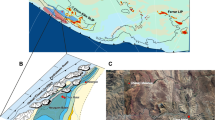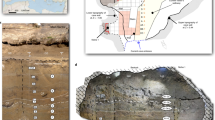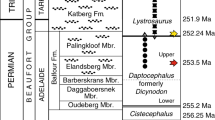Abstract
THERE has recently been renewed discussion concerning the extent of the Weichselian Irish Sea Glacier1–3, and several authors have stressed the difficulty of determining its southern margin in Wales on the basis of geomorphological and stratigraphic criteria alone. Also, in South Wales there is no known reliable interglacial or interstadial palaeobotanical site which can be used for the dating of drift sequences. Archaeological investigations in favourable localities may assist greatly in this debate, as well as extending knowledge of Pleistocene faunas and of human Palaeolithic occupation on the South Wales lowlands4,5. Already it is suggested that substantial parts of Pembrokeshire and the Gower Peninsula were unaffected by ice during the last glaciation3, allowing the possibility of more or less continuous human Palaeolithic occupation of some coastal sites. The radiocarbon age determination for the “Red Lady” of Paviland (18,460 ± 340 yr BP, BM374)6 supports this view, indicating that there was Proto-Solutrean occupation of cave sites in Gower close to the peak of the last glaciation. This was followed by a Creswellian occupation, probably after 15,000 yr BP7,8. In Pembrokeshire the most promising Upper Palaeolithic and Mesolithic finds have been made during a series of excavations on Caldey Island since 1911 (refs 9 and 10).
This is a preview of subscription content, access via your institution
Access options
Subscribe to this journal
Receive 51 print issues and online access
$199.00 per year
only $3.90 per issue
Buy this article
- Purchase on Springer Link
- Instant access to full article PDF
Prices may be subject to local taxes which are calculated during checkout
Similar content being viewed by others
References
Mitchell, G. F., Scient. Proc. R. Dubl. Soc., 4 (13), 181 (1972).
John, B. S., Proc. geol. Assoc., 83 (2), 213 (1972).
Bowen, D. Q., in The Upper Palaeozoic and Post-Palaeozoic Rocks of Wales (edit. by Owen, T. R.), (Cardiff, 1973).
Bowen, D. Q., Antiquity, 44, 134 (1970).
John, B. S., Antiquity, 45, 141 (1971).
Oakley, K. P., Antiquity, 42, 306 (1968).
Houlder, C., and Manning, W. H., South Wales, 14 (London, 1967).
Sparks, B. G., and West, R. G., The Ice Age in Britain, 233 (London, 1972).
Lacaille, A. D., and Grimes, W. F., Archaeol. Cambrensis, Part I, 104, 85 (1955); Part II, 110, 30 (1961).
Grimes, W. F., in Pembrokeshire Coast National Park (edit. by Miles, D.), 36 (HMSO, 1973).
Lech, A. L., Pax, 9 (51), 3 (1917).
John, B. S., Nature in Wales, 12 (3) 138 (1971).
Rowlands, B. M., Nature phys. Sci., 230, 9 (1971).
Hicks, H., Q. Jl geol. Soc., 42, 3 (1886).
Author information
Authors and Affiliations
Rights and permissions
About this article
Cite this article
VAN NEDERVELDE, B., DAVIES, M. & JOHN, B. Radiocarbon Dating from Ogof-yr-Ychen, a New Pleistocene Site in West Wales. Nature 245, 453–454 (1973). https://doi.org/10.1038/245453a0
Received:
Issue Date:
DOI: https://doi.org/10.1038/245453a0
Comments
By submitting a comment you agree to abide by our Terms and Community Guidelines. If you find something abusive or that does not comply with our terms or guidelines please flag it as inappropriate.



